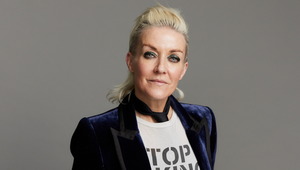
Luxury Fashion Is Taking Influencers Seriously

Luxury fashion houses are known for setting the wider fashion agenda and being at the forefront of trends. But the most prestigious fashion houses – Louis Vuitton, Gucci, Prada and Dior – haven’t always been so adept in their influencer marketing strategy.
Where global luxury brands previously struggled to connect with younger generations (think early-mid 2000s when fashion recognition in popular culture was the reserve of affordable brands like Von Dutch, Juicy Couture, Abercrombie and Diesel) luxury fashion houses have moved on from a celebrity-first approach and are directly competing with smaller, culture-driven brands to access the same finite influencer pool.
One area they're capitalising on? Fashion influencers. Having been cautiously slow to invest in a meaningful presence on social media, we are now seeing a noticeable wave of luxury presence at the forefront of social media timelines, solidifying a new era for influencer marketing at the highest levels.
As the average age of luxury fashion consumers continues to fall, this is no surprise. The target audience luxury brands want to engage, gen z, are the original digital natives. The most in tune with what is and what is not authentic, they appreciate the relatability and accessibility that comes with seeing their favourite influencers alongside their most highly desired brands.
Prada and Dior can all be seen competing for influencer attention, inviting them to seasonal shows, dinners and brand parties and sending extravagant gifting packages. It is now commonplace for these same brands to invite a fashion influencer with 150,000 – or even fewer – Instagram followers to their activation schedules, and not just as filler, but as the headline act.
Gucci is noticeably active in this space. For their 2023 cruise collection, the Italian brand flew out a number of UK fashion influencers to see the show live in Italy, wining them, dining them and seating them front row to boast of their new relationship with one of fashion's most famous names.
Burberry is another luxury fashion house, more traditional than most, with a creative director who understands the power of a gen-z social presence and is known for positioning his circle of famous friends (Irina Shayk, Moses Sumney, Khalil Ghani) to define the brand's organic social output.
Recent examples show the impact these campaigns can have: Trainspotting extraordinaire and TikTok sensation Francis Bourgeois for Gucci x North Face, Emma Chamberlain for Vogue’s Met Gala coverage, Shaquille Keith for Bentley Motors.
Traditionally, these brands only aligned with top-tier internationally recognised names: Lily Allen for Chanel, Bella and Gigi Hadid for Versace, Jennifer Lawrence for Dior - global scale, multi-million pound deals.
Eschewing rigid and expensive Hollywood brand ambassador deals, luxury brands have granted themselves the freedom to make friends with smaller names and their targeted, highly engaged audiences. In doing so, they are accessing a new network of future fans and cementing their position in pop culture for the younger generation.
As these brands creep further into influencer territories that once belonged to smaller and emerging brands, new designers and grassroots start-ups may find themselves unable to compete with the abundant financial resources and “clout-chasing” ability that luxury brands enjoy.
It is an ever-evolving challenge to continuously find new ways to interact with, engage and retain influencers and the audiences they hold the keys to.














